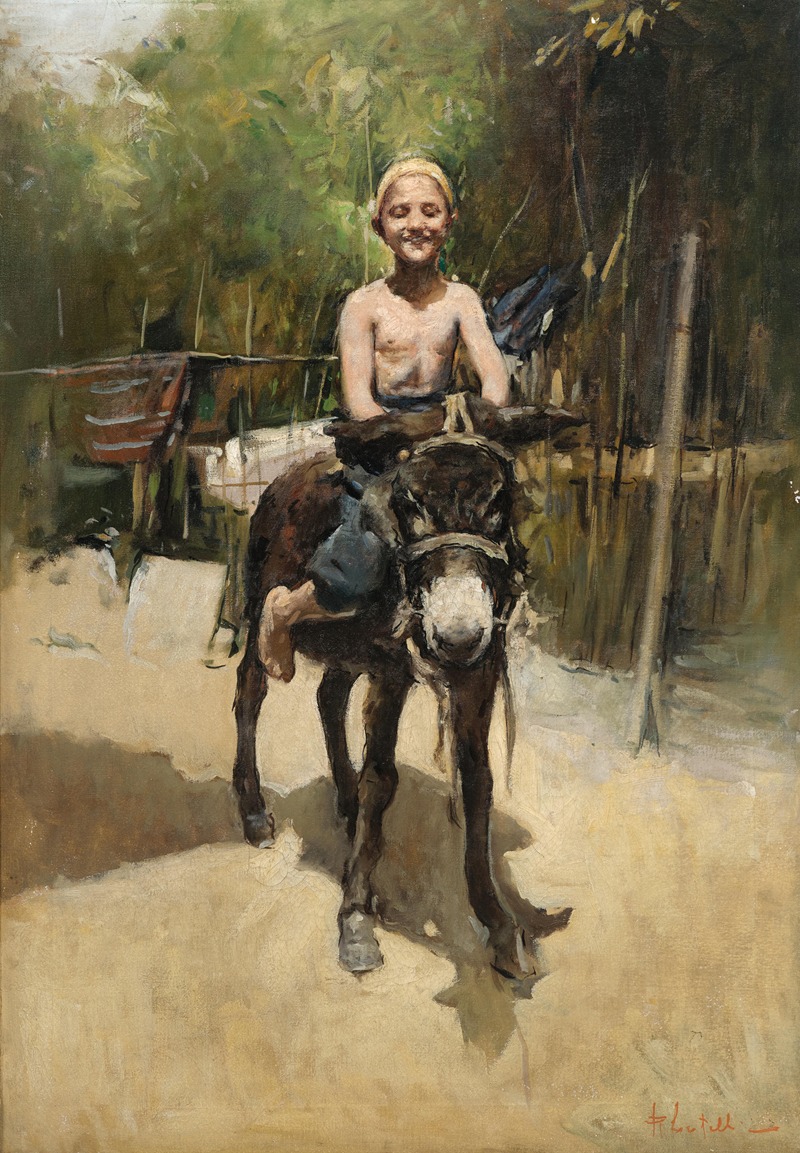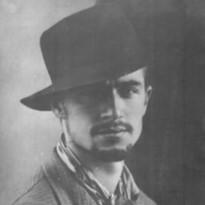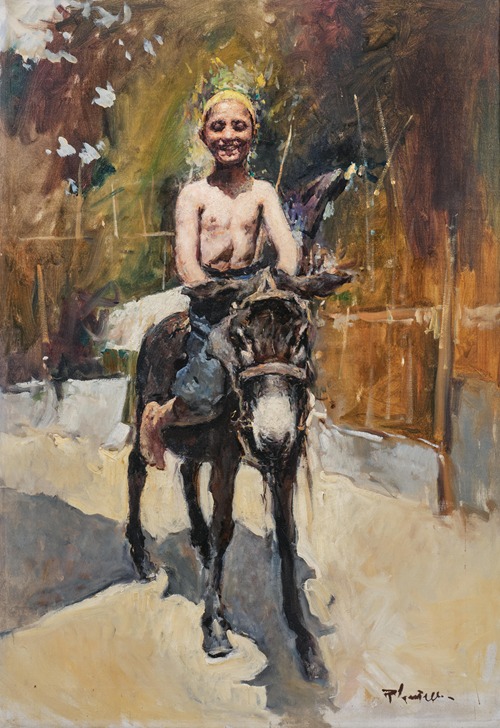

Romualdo Locatelli, a painter, was born in Bergamo, in Northern Italy. He was the first son of Luigi Locatelli a decorative painter and fresco artist. The Locatelli family is known for producing three generations of artists including painter Raffaello Locatelli , the sculptor Stefano Locatelli, and the Italian/Brazilian fresco artist Aldo Locatelli.
As early as age eleven Romualdo Locatelli attended art classes, and his teacher Francisco Domenighini noted him as being an “intelligent and studious boy.” At the age of fourteen Locatelli assisted his father in executing decorations for the parish church of San Filastro, 25 kilometers from Bergamo.
Locatelli then studied at the Carrara Academy directed by Ponziano Loverini. At the age of twenty he first exhibited and began to receive critical recognition. He made a study trip to Tunisia in 1927, followed by trips to Sardinia, Tuscany and the Veneto. In 1933 he moved to Rome where he executed a portrait of Victor Emmanuel III, which was exhibited in the 1938 Venice Bienale. Immensely successful in Italy, Locatatelli’s work was soon collected by the Pope and Benito Mussolini.
In 1938 Locatelli was invited to visit the Dutch East Indies by the colonial governor. In Bali, where he stayed with the Candian composer Colin McPhee. Locatelli and his wife moved in high society, even though a speech impediment caused him to be shy and reticent in public. Locatelli left Bali for Manila in 1940 along with another Italian artist, Emilio Ambron. In the Philippines he met General MacArthur, and remained during the period of the Japanese Occupation.
Locatelli disappeared under mysterious circumstances in the Rizal forest near Manila on February 23, 1943, after making a number of remarkable works in the Philippines including a presidential portrait. It is possible that he was believed to be an Axis spy, and for that reason he may have been targeted by locals. Also, prior to his death as many as 75 of his works were destroyed by the Japanese firebombing of Manila. Today Locatelli — despite the rarity of his Asian works — is considered one of the finest Italian Orientalists.

